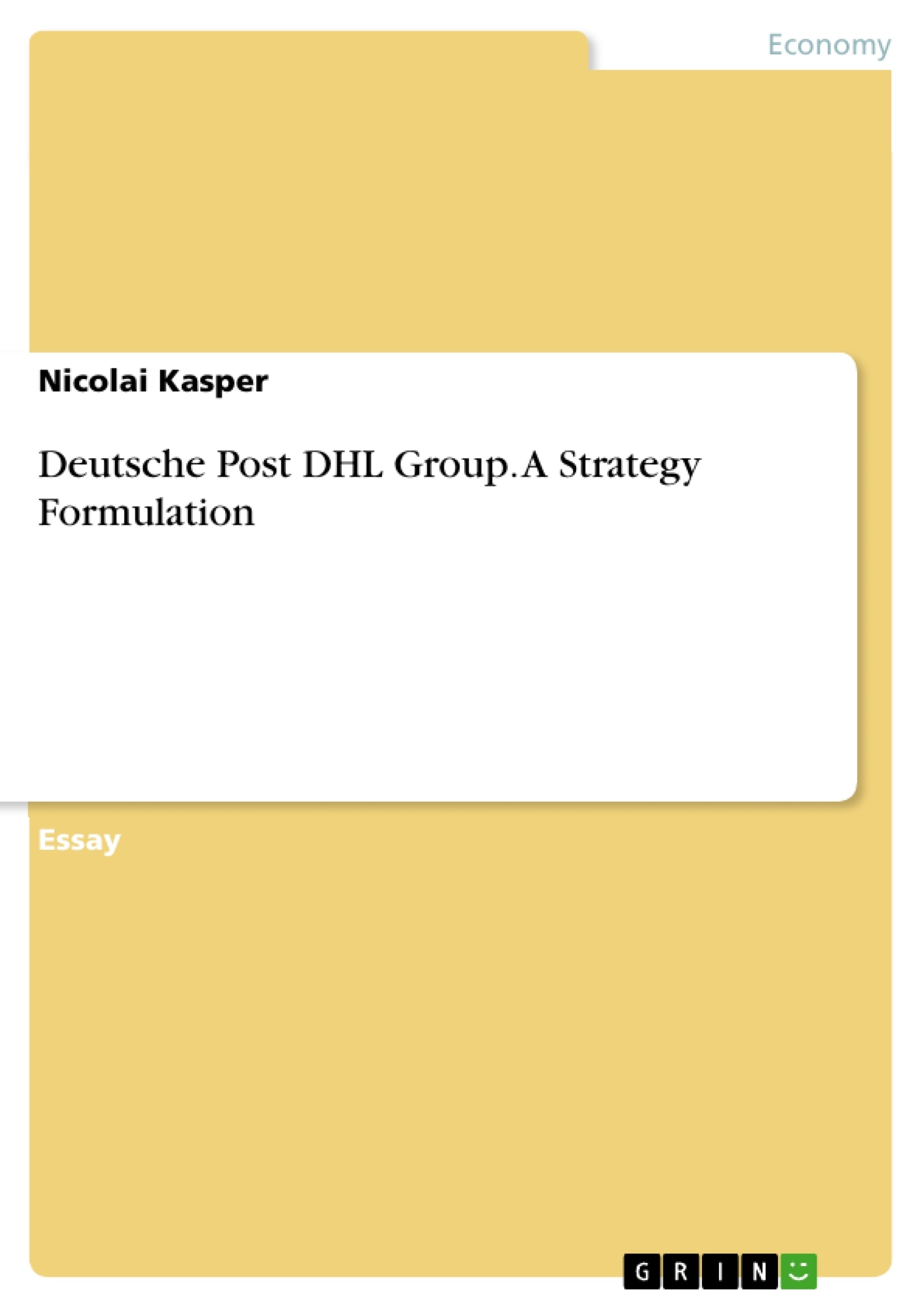This essay analyses the internal aspects of the company and identifies its strength and weaknesses. It also offers an insight in the business environment and pinpoints opportunities and Threats. In chapter three, the prevailing strategy of the group is briefly presented and an alternative is formulated based on the previous SWOT-analysis.
Deutsche Post DHL Group originated from the Deutsche Bundespost, which had been a state-owned postal-delivery, logistics and telecommunication company. It was divided and privatized in 1995 and Deutsche Post AG became a thoroughly independent company with its IPO in November 2000 (DPDHL, 2020). Ever since, the company has continuously expanded its business through acquisition activities and became the world largest courier company. The most significant milestone was the acquisition of DHL in December 2002. Now, around 550.000 employees are working for DPDHL and achieved a revenue of €63,341 million and an EBIT of €4,128 million. The group is structured in five divisions: Post & Parcel Germany, Express, Global Forwarding / Freight, Supply Chain and eCommerce Solutions. In the era of corona and technological breakthroughs, the world is constantly changing and so does the world of business. Especially, a global operating logistic company needs to adapt rapidly to these changes.
Table of Contents
- Introduction
- Business environment analysis
- Internal Situation:
- External situation:
- Strategy formulation
- Conclusion
Objectives and Key Themes
This essay analyzes Deutsche Post DHL Group, examining its internal aspects, identifying strengths and weaknesses. It also provides insight into the business environment and pinpoints opportunities and threats. Finally, it presents the prevailing strategy of the group and formulates an alternative based on the previous SWOT analysis.
- Internal analysis of Deutsche Post DHL Group
- External analysis of Deutsche Post DHL Group
- SWOT analysis of Deutsche Post DHL Group
- Current strategy of Deutsche Post DHL Group
- Alternative strategy formulation
Chapter Summaries
The first chapter introduces Deutsche Post DHL Group, its history, and its current structure. It highlights the importance of adapting to the ever-changing business environment, particularly for a global logistics company.
Chapter two focuses on a comprehensive business environment analysis, examining both the internal situation and the external risks and opportunities of the DPDHL group. It explores the internal performance of the company in areas like marketing, finance, management, operations, and research and development (R&D). This chapter evaluates the product portfolio of each division, focusing on brand value, R&D efforts, and financial situation.
Keywords
This preview highlights key terms and concepts such as Deutsche Post DHL Group, SWOT analysis, business environment analysis, strategic planning, internal situation, external opportunities, strengths, weaknesses, threats, and alternative strategy formulation. It also examines divisions such as Post & Parcel Germany, Express, Global Forwarding / Freight, Supply Chain, and eCommerce Solutions.
- Citar trabajo
- Nicolai Kasper (Autor), 2020, Deutsche Post DHL Group. A Strategy Formulation, Múnich, GRIN Verlag, https://www.grin.com/document/963038



